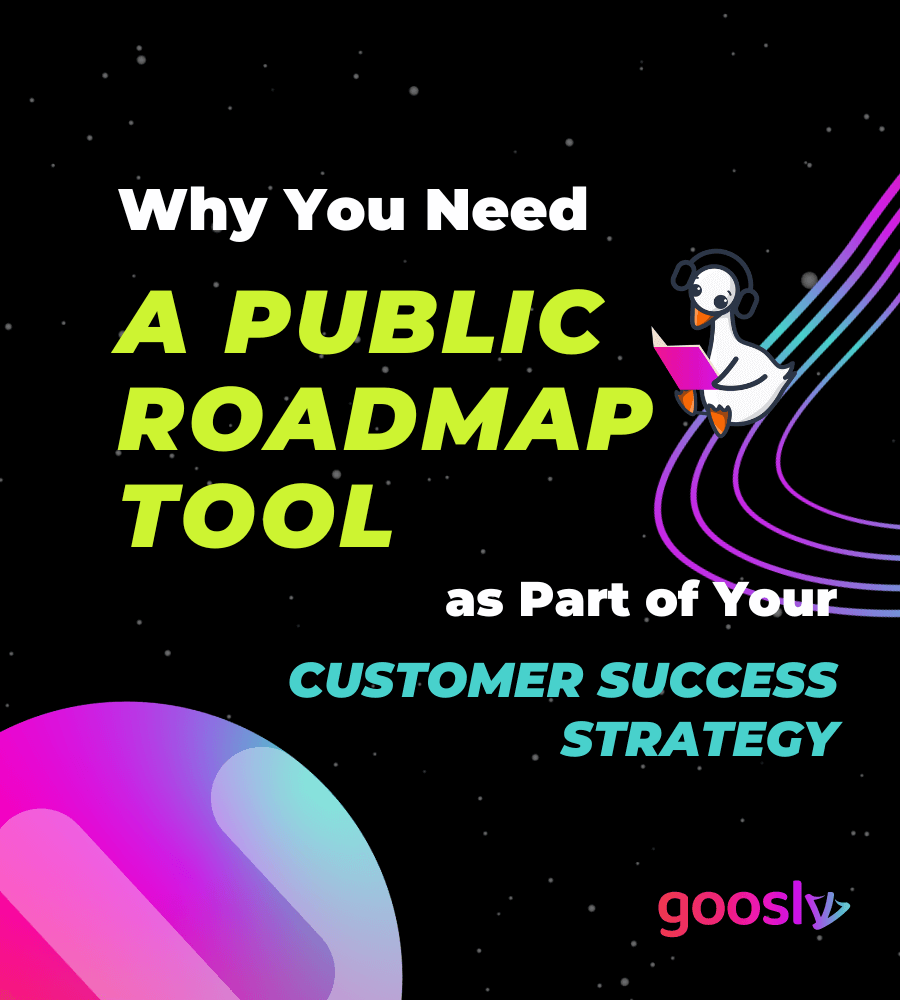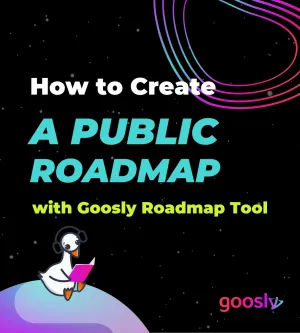What you'll get from this article:
🗣️ How to get feedback on your product roadmap from your customers and team members
ℹ️ What are product roadmaps, and why are they important?
🔠 The steps for effective roadmapping
🆓 Tips for gathering customer/team feedback
Public roadmaps are a key ingredient in any good product strategy. They let customers, partners, and other stakeholders know what you're working on and when they can expect it. But not everyone knows how to create a public roadmap or knows where to start. This blog post will show you how to create your own roadmap for your product and suggest some free public roadmaps from Goosly that startup founders and project managers can use.
1. What is a roadmap, and why do you need one for your product
Creating a roadmap for a product is an essential part of the development process. A roadmap is essentially a plan that outlines what your product will look like in the future and how you will get there. It provides clarity to stakeholders, customers, and developers on what needs to be done and when it should be completed.

Having a roadmap helps keep everyone on the same page and ensures that everyone is working towards the same end goal. It outlines what features need to be implemented and launched, provides an estimate of when they’ll be available, and gives insights into potential problems or roadblocks that might arise. This helps maintain focus on the project and enables everyone involved to stay organized and make informed decisions throughout the development process.
A public roadmap can also help build trust with potential customers or investors because it shows that you are being transparent about your plans for the product. It allows them to see exactly what you are working on, how quickly you are progressing, and any areas of improvement or opportunities for growth. Furthermore, it gives them peace of mind that their investments or purchases are based on accurate information about their progress so far.
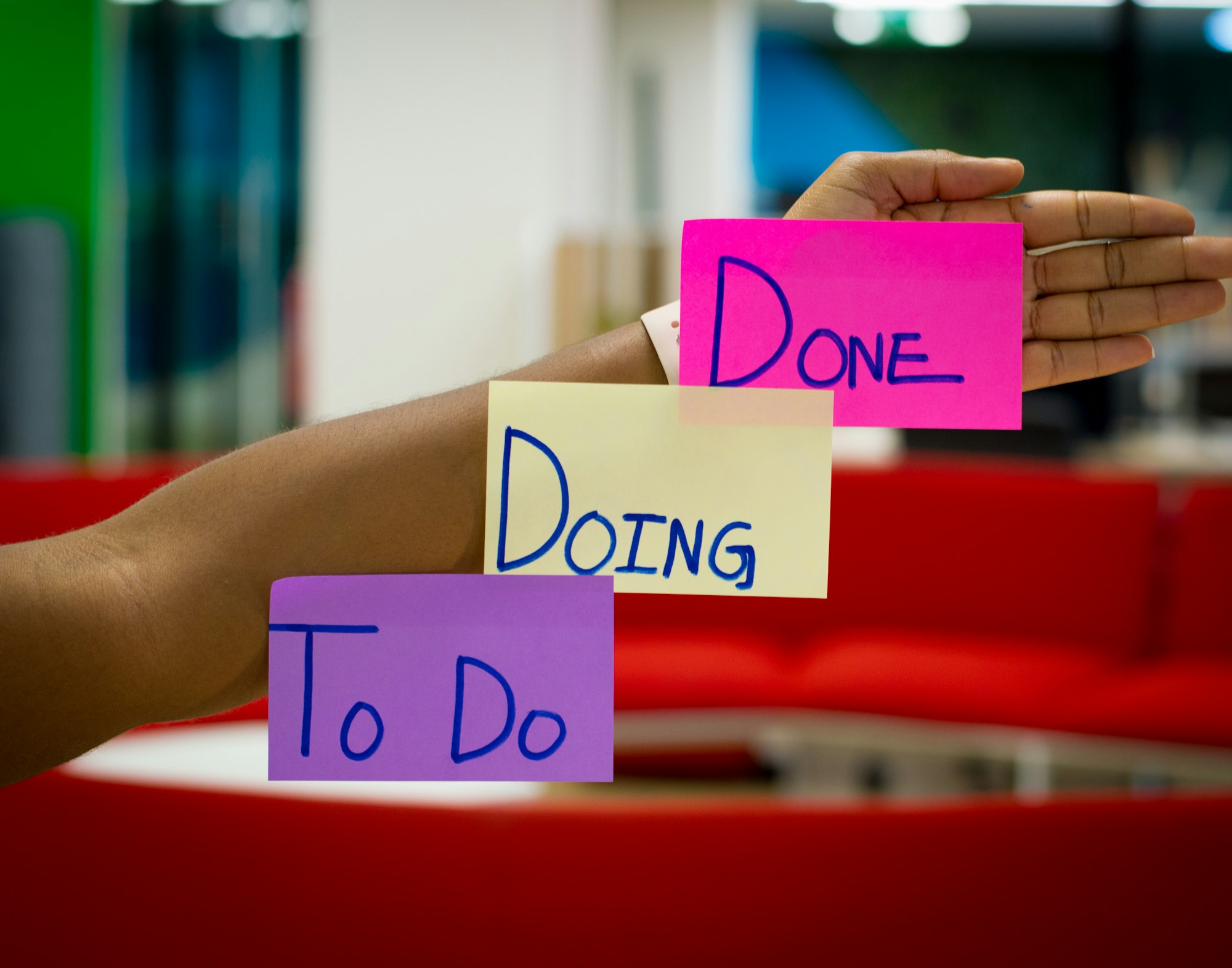
Goosly's free public roadmaps offer startup founders and project managers an excellent way to create their own public roadmaps without having to do all the work themselves. They provide templates designed especially for startups that make it easy to visualize your project's timeline through interactive charts so you can easily track progress against milestones over time.
The platform also allows users to collaborate with others in real-time while they work together in creating their roadmap, ensuring transparency between team members while also allowing everyone involved to see how each piece of work fits into the larger picture of the product’s future goals.
Overall, having a public roadmap for your product is beneficial for maintaining focus and communication between all stakeholders involved in its development process. Goosly's free public roadmaps offer an excellent solution for startup founders and project managers who want an easier way to keep track of their products timeline without having to do all the work themselves.
With its user-friendly tools built specifically for startups, this platform offers invaluable assistance in helping teams achieve their vision faster by providing efficient collaboration features that enable organizations to reach success more quickly than ever before!
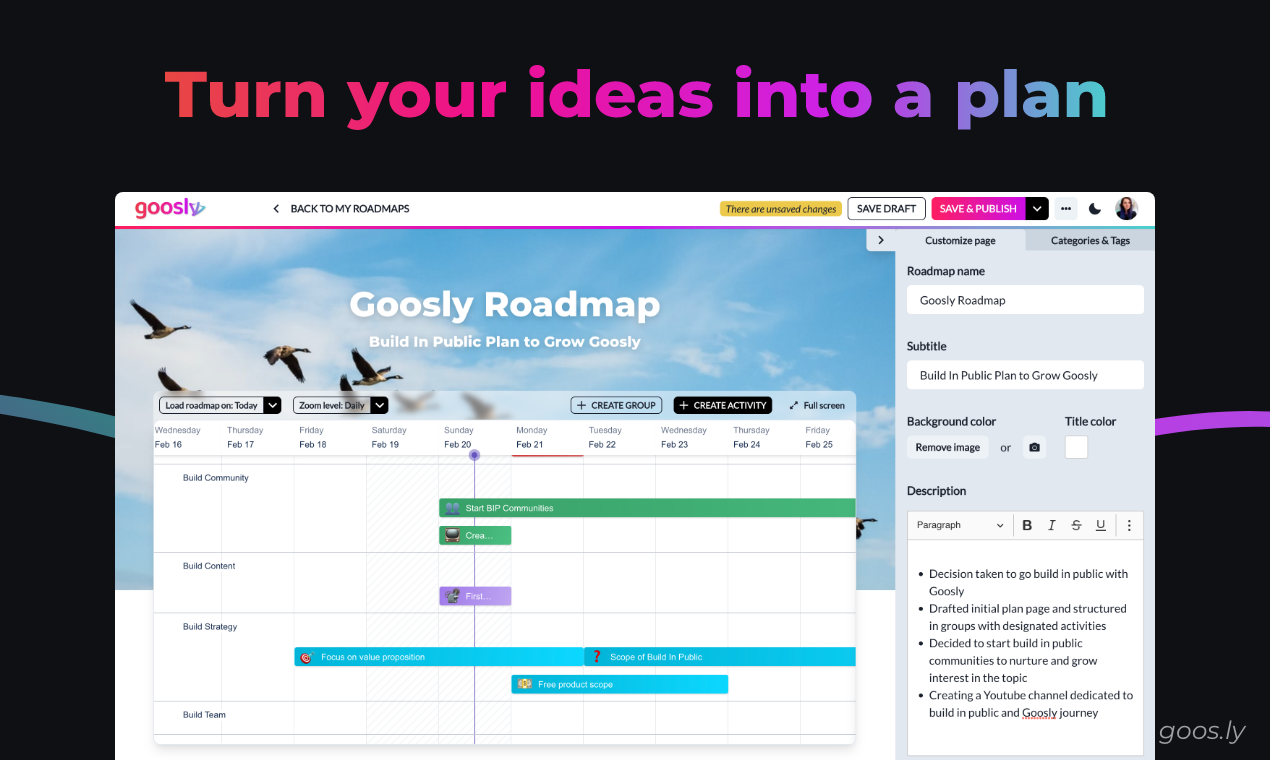
2. How to create a public roadmap that will help you keep track of your progress and keep your customers informed
Creating a public roadmap can be an incredibly important part of any business's ability to provide transparency and keep customers informed about their progress. By creating a public roadmap, businesses can provide customers with valuable insights into the development timeline and allow them to easily track the progress of their goals.
Before creating a public roadmap, it is important to first define the objectives of your project. This will help ensure that each milestone on the roadmap is meaningful and relevant to the completion of your project. You should consider including all of the major steps and milestones that need to be completed in order to reach your goal, from initial concepting all the way through implementation.
Once objectives have been defined, you can begin to create a timeline for each stage of the project. Make sure to clearly outline dates for when each task or milestone needs to be completed. This will help keep you on track as well as give customers an accurate timeline for when they should expect updates and improvements.
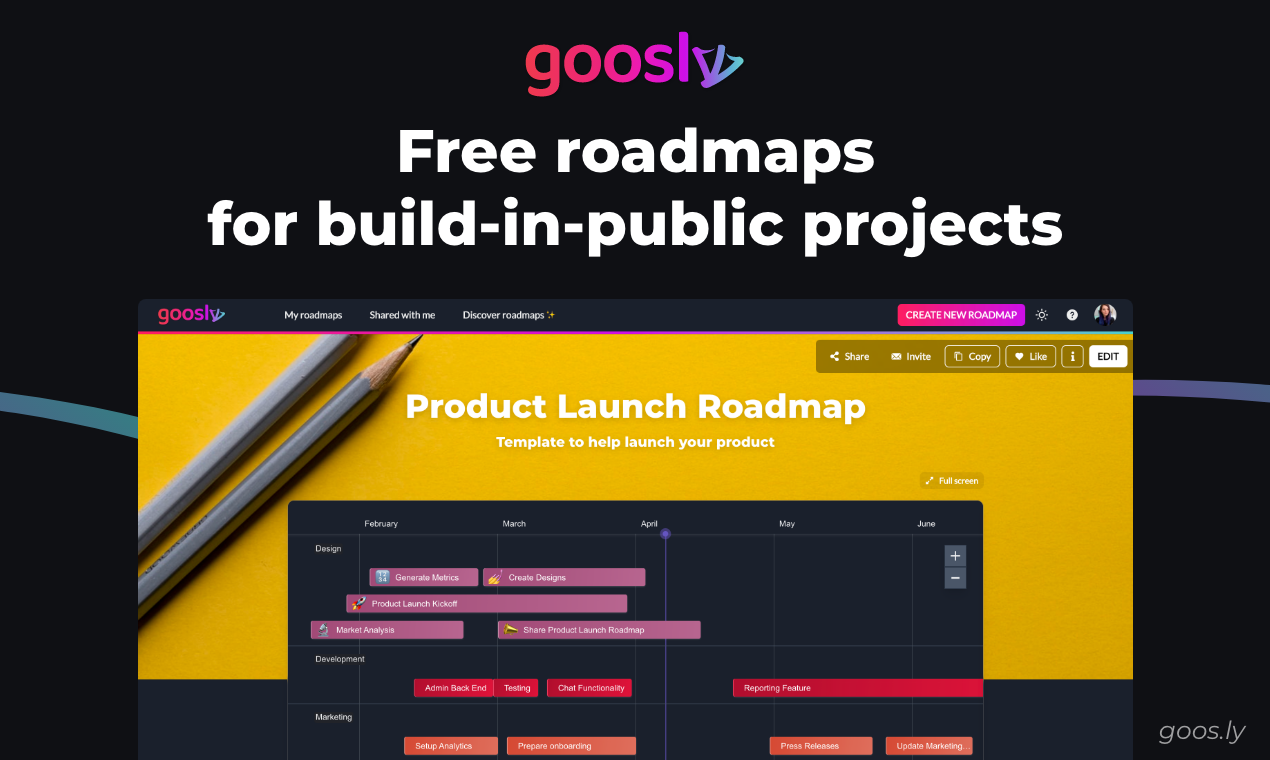
When creating a public roadmap, it is also important to include details about any changes or updates that may take place along the way. This could include new features or bug fixes that have been requested by customers, additional resources needed for the successful completion of tasks, or any other changes that may occur throughout the course of development. Being transparent with customers throughout this process is key to building trust and keeping them informed along the journey.
It is also important to cultivate user feedback from your customer base on how best to craft your public roadmap so that it meets their needs while also helping you stay organized throughout your project’s development cycle. Customer feedback can be invaluable in not only determining which features are most desired but also when they should be released in order for maximum customer satisfaction and engagement.
Finally, make sure your public roadmap reflects both short-term objectives as well as long-term goals for completing projects on time and meeting customer expectations. It’s important that customers understand exactly what needs to be done in order for a product or service launch date to occur successfully – from beginning conception all the way through delivery – so that expectations are set correctly from day one and everyone involved feels confident about reaching their end goal together in an efficient manner.
3. Tips for using Goosly's roadmap tool to create and share your product roadmap
Goosly's public roadmap tool provides a comprehensive, yet intuitive way to create and share product roadmaps. Whether you're an entrepreneur looking for a simple way to organize your product team's vision or an established company looking for a more dynamic approach to tracking progress, Goosly's roadmap can be a useful tool in any project management strategy.

Here are some tips for using Goosly's roadmap tool to create and share your product roadmap:
1. Start by setting clear goals:
Before you begin creating your roadmap, take the time to define the goals and objectives of your product or project. This will help provide both clarity and structure as you work to build out your roadmap.
2. Break down tasks into manageable chunks:
Once you have the high-level objectives in place, break the tasks required to reach them into smaller chunks that are easier to digest. This will help keep the project from becoming too overwhelming and make it easier to track progress over time.
3. Invite collaboration from key stakeholders:
Inviting collaboration from other stakeholders within the organization can provide valuable insights into the best path forward for achieving success with a particular project or product development timeline. By including key decision makers early in the process, they may be able to offer helpful advice or resources that could speed up development time or save money in the long run.
4. Use groups & colors:
Utilizing groups & colors is one of the most helpful ways to quickly browse through projects within your roadmap. This method allows users to drill down into specific topics quickly when searching for individual components related to a particular project or task item within their roadmap timeline.
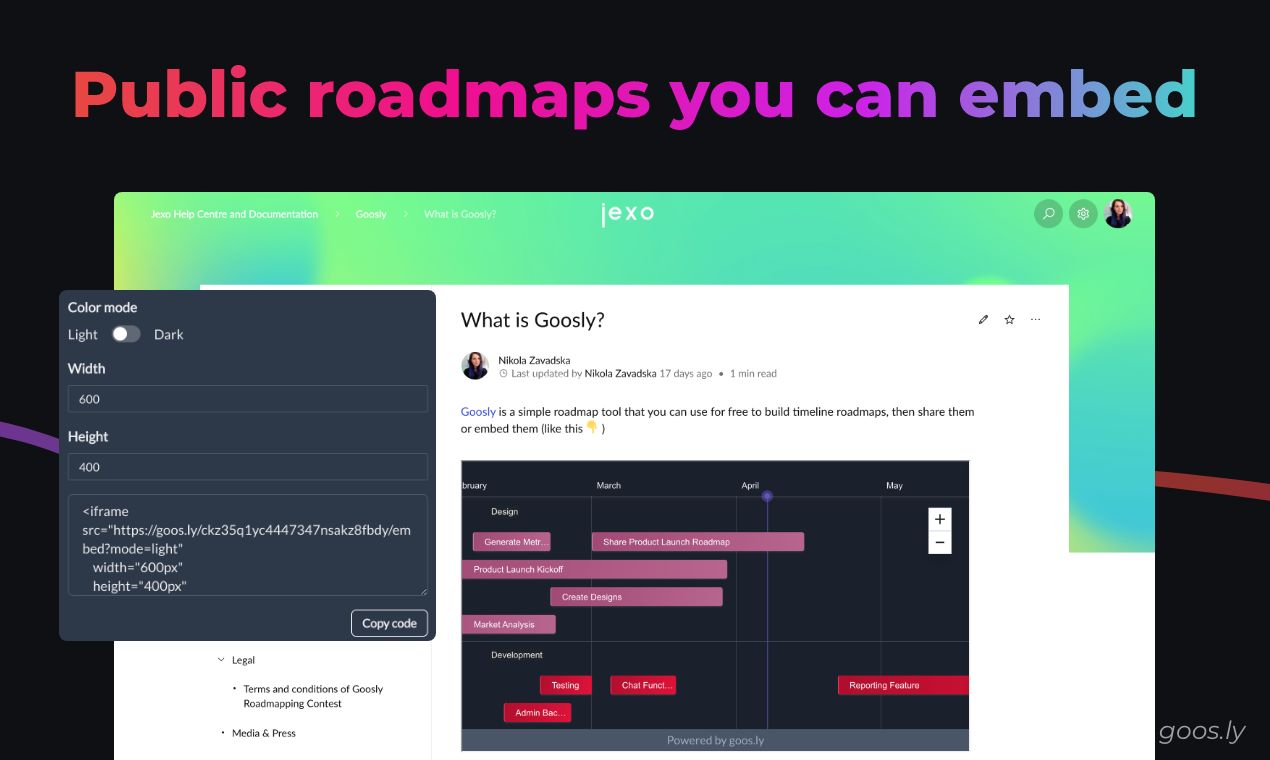
5. Share & embed easily:
The share feature allows users to quickly publish and share your plans on socials, or embed the roadmap into a website, so it can easily be shared externally with those outside the organization who need access (such as customers).
4. Examples of how other companies are using roadmaps to improve their products and customer relations
Roadmaps are increasingly becoming a popular tool for organizations to create, develop, and maintain strong customer relationships. They provide a clear direction and timeline for product development that can help a company stay organized and on track. Companies like Amazon, Microsoft, and Apple have all used roadmaps to their advantage in order to improve their products and customer relations.

Amazon is one such company that has widely adopted the use of roadmaps as part of its product development strategy. For example, they created an Alexa roadmap that outlines the tools they developed to make interacting with Alexa more natural and consistent.
This roadmap includes details on how Amazon planned to increase the range of devices compatible with Alexa, increase customer engagement through natural language processing capabilities, and continually refine the experience for customers by introducing new features. As a result of this roadmap, Amazon has expanded the features offered by Alexa and improved customers’ experiences with voice recognition technology.

Microsoft is another company that uses roadmaps to keep its customer relations strong. They recently outlined their Microsoft 365 roadmap in order to ensure customer satisfaction with their products.
The roadmap included information about upcoming updates for their productivity apps and cloud services, such as bug fixes, security patches, performance improvements, new app launches, and other enhancements designed to give customers more control over their devices. By staying up-to-date with these changes in a timely manner, Microsoft has been able to lead the industry in terms of improving user experiences with its products.
Finally, Apple is an organization that understands how important it is to keep customers informed about product development timelines through roadmaps. For instance, when developing iOS 13 back in 2019, they provided detailed insights into what feature requests would be added or updated including Dark Mode design changes for apps like Messages and Maps plus improved privacy settings for users.
These insights allowed customers to understand what was coming next from Apple before its official release which helped create buzz around iOS 13 even before it was released across all platforms worldwide.
Overall public roadmap tools can be extremely beneficial when used properly by organizations seeking to improve both their products and customer relations at the same time. By providing detailed insight into what’s being developed by a particular organization, customers can gain access to the information they want while also allowing companies an opportunity to keep them informed so they can make better decisions on whether or not they want to purchase or upgrade certain products or services accordingly.

5. How to get feedback on your roadmap from your customers and team members
Getting feedback on your roadmap from customers and team members is essential to ensure the success of any product or project. By getting feedback, you can understand what they think of your plans and how they might respond to them, enabling you to make changes quickly in response. There are a few key steps to effectively get useful feedback from customers and teams during the road-mapping process.
1️⃣ It’s important to be clear about why you are seeking feedback and what type of input is most helpful.
Depending on who you are engaging with, this could include questions about functionality, user experience, pricing models, a feature request, etc. It’s important to specify what kind of information would be most helpful for advancing the roadmap and make sure everyone involved understands it.
2️⃣ Determine who should give feedback during the road-mapping process.
Customers have often been the primary source of feedback during road-mapping; however, team members can also provide valuable insights into how best to implement a product or project. Team members may know more about the technical constraints that need to be factored into your plan or suggest different approaches that could work better.
3️⃣ Consider how best to collect user feedback.
This can range from surveys or interviews with customers or team members to group discussions led by a facilitator. If possible, try and include multiple methods for gathering feedback as different people may prefer different avenues for providing their thoughts (e.g., some may prefer online surveys while others may prefer face-to-face conversations).


